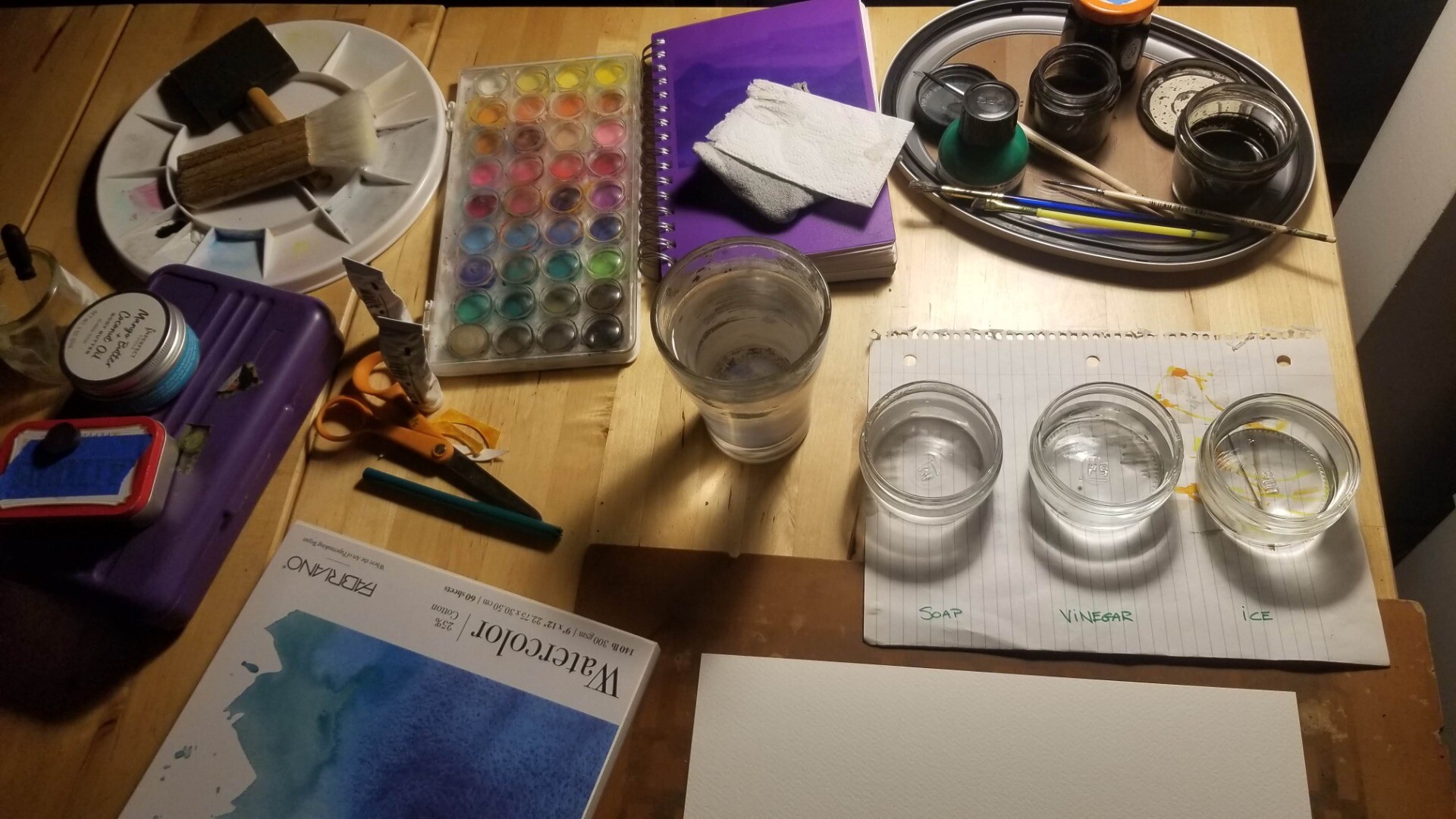We're Having a Heat Wave (Part 1)
Human Beings Are Like Paints
Both react poorly to heat. Dehydration becomes a larger & larger concern as the temperature climbs. Where I live, the temperature rising is generally combined with the humidity falling, which leads to even faster dehydration. As extreme heat waves become more & more common, we are going to have to adapt how we do a lot of things, from growing our food to building our homes. Those are issues I will leave to architects & agricultural experts, however. I will be talking about a different subject: how to watercolor in extreme heat. There’s a lot to talk about because, as you will see-
Paints Are Like Human Beings
There are myriad tips & tricks to weather the heat a little better while painting.
Do not paint in high heat, if you can avoid it. Working early in the day or late at night when it is comparatively less hot & more humid will be more comfortable for you & your watercolors.
Be aware of how much heat your light source is contributing. Painting in direct sunlight (even if you are inside) or under a hot lamp will dry everything out quickly! When it gets over 90°F (32°c) I use my somewhat dim ceiling light to paint as much as possible. I turn my bright/hot lamp on only for mixing color & painting details. The difference it makes is remarkable!
Work smaller, if you can. When it gets over 100°F (38°c), if I absolutely must paint, I won’t paint anything larger than 2 x 3 inches. If the paper is small enough, you can paint fast enough to beat the accelerated drying time!
Add water to the back of the paper, then tape it to your work surface. The paper will stay damp longer if both sides are wet! I have seen this as a tip to avoid the paper rippling, but it also helps keep everything hydrated on hot days.
Add water to everything! Mix your paints a little thinner than usual, wet your paper a little more than usual… You know the poem; “water water everywhere, so let’s all have a drink.” Get yourself a spray bottle with a very fine mist, & you can mist your paper, your paints, even yourself!
Switch to a different medium entirely! I recently had to switch from watercolors to ink mid-painting as the temperatures climbed so high the “water” part of my colors was evaporating before I could work.
 While ‘art differently’ is certainly a tactic, it may not be the best tactic.
While ‘art differently’ is certainly a tactic, it may not be the best tactic.
Happily, there are many other solutions. In fact-
You Can Buy A Solution
Several, even. There are a variety of products you can add to either your water or your paint to extend drying time. These products can also make the watercolors more glossy, more transparent, more textured, or more pearlescent, so test before using! I have not tried any of these products & therefore cannot make any recommendations.
Gum Arabic is the hardened sap of Acacia trees. It is a common ingredient in many watercolors already. It will make your paint dry more slowly, giving you more time to work, while also making the paint appear more glossy & transparent. You can mix it into the water or the paint.
Ox Gall Liquid is not vegan. It is a fluid harvested from bovine (usually cattle) gall bladders & mixed with alcohol. Some watercolors use ox gall as an additive ingredient. If having a vegan art kit is something you value, check the ingredients for each individual color- especially shades of black.
Synthetic Ox Gall Liquid is vegan. Both versions of ox gall reduce surface tension, increasing how much & how quickly the paint flows. They both extend drying time. You can mix both into the water or the paint. You only need a few drops! Too much can dull your colors.
Watercolor Medium is a confusing name. All the products in this section are referred to as watercolor mediums. Watercolor Medium, however, is a specific product. It increases the paints’ gloss & saturation, like gum arabic, as well as the speed & extent of the paints’ flow, like ox gall.
Tune In Next Week For The Epic Scientific Conclusion!
I thought this could be done in one week but it is getting long. I’ve been experimenting with adding various solutions to my water & paint to beat the heat. Next week I’ll share the #WatercolorScience I’ve been engaged in!
 This isn’t a mess, it’s science!
This isn’t a mess, it’s science!
Making this a 2-part series means you had an opportunity to share your watercolor wisdom! Thank you to everyone who sent your tips & tricks to me via Ko-Fi & Mastodon! I absolutely loved trying as many as I could that week!
This is an ongoing series of #WatercolorScience articles about how different types of weather affect your painting, even if you work inside.
Extreme Heat & low humidity: We're Having a Heat Wave & I Started This Heat Wave Freezing Temperatures: When Winter Comes Howling In Humidity & Rain: Lost in a Fog
Get my art on mugs & vinyl stickers in my Shop!
Donate to support my works & get cool perks on Ko-Fi
Join us for #ArtABCs, the best art challenge on the internet!
Find me
- All pictures posted are my own work.
- All reviews are my own unpaid & unsolicited opinions.